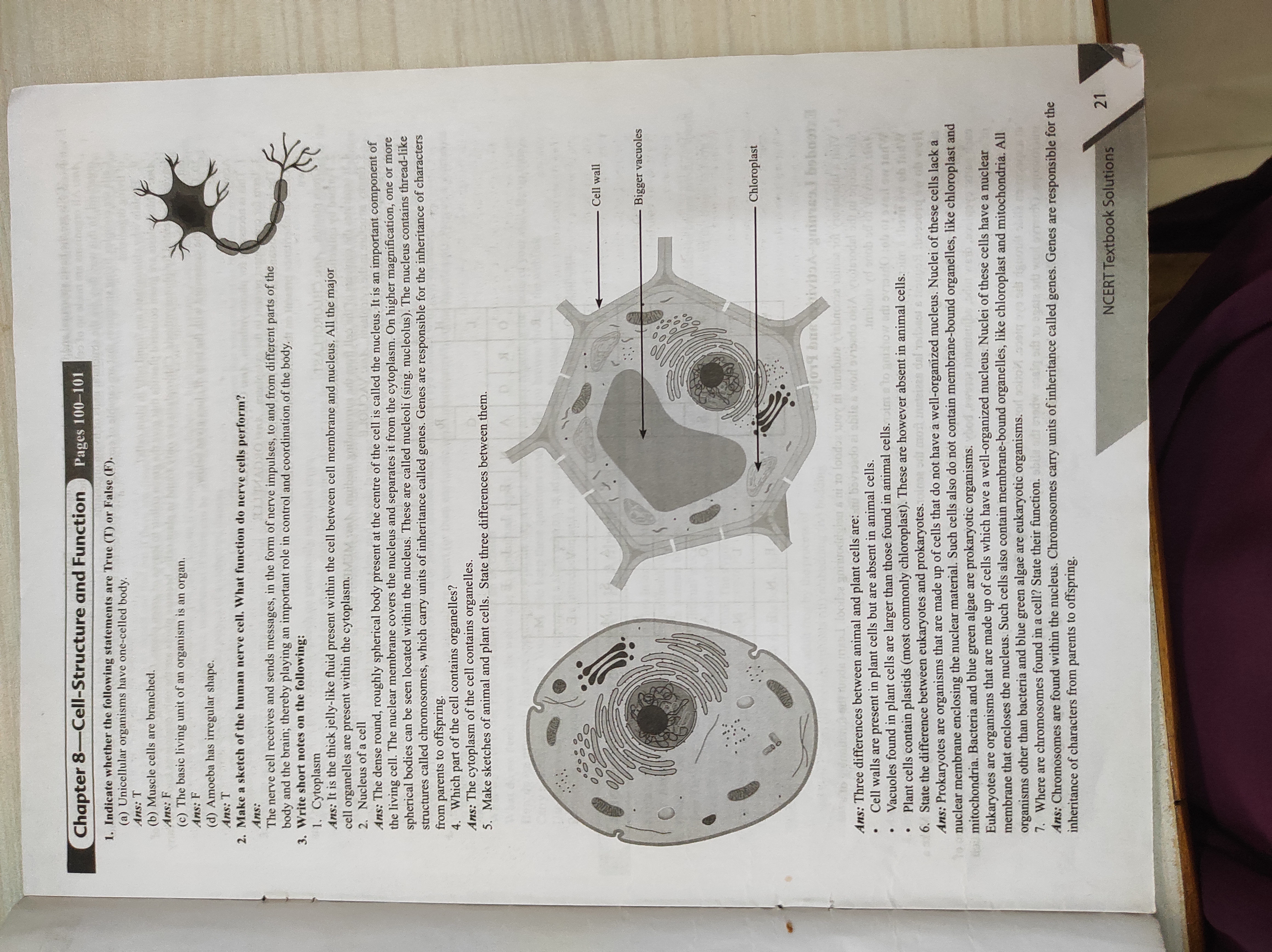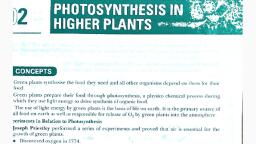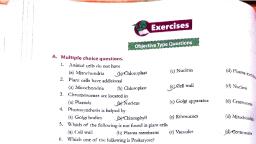Page 1 :
Chapter 8-Cell-Structure and Function, Pages 100-101, 1. Indicate whether the following statements are True (T) or False (F)., (a) Unicellular organisms have one-celled body., Ans: T, (b) Muscle cells are branched., wrAns: F, (c) The basic living unit of an organism is an organ., Ans: F, (d) Amoeba has irregular shape., Ans: T, 2. Make a sketch of the human nerve cell. What function do nerve cells perform?, Ans:, The nerve cell receives and sends messages, in the form of nerve impulses, to and from different parts of the, body and the brain; thereby playing an important role in control and coordination of the body., 3. Write short notes on the following:, 1. Cytoplasm, Ans: It is the thick jelly-like fluid present within the cell between cell membrane and nucleus. All the major, cell organelles are present within the cytoplasm., 2. Nucleus of a cell, Ans: The dense round, roughly spherical body present at the centre of the cell is called the nucleus. It is an important component of, the living cell. The nuclear membrane covers the nucleus and separates it from the cytoplasm. On higher magnification, one or more, spherical bodies can be seen located within the nucleus. These are called nucleoli (sing. nucleolus). The nucleus contains thread-like, structures called chromosomes, which carry units of inheritance called genes. Genes are responsible for the inheritance of characters, from parents to offspring., 4. Which part of the cell contains organelles?, Ans: The cytoplasm of the cell contains organelles., 5. Make sketches of animal and plant cells. State three differences between them., Cell wall, Bigger vacuoles, Chloroplast, ivitaAgniesl boboo, To loodos suov viabnose oin, ai cloubule, pedo ai sbile a wod ovisado oA vde, Ans: Three differences between animal and plant cells are:u, Cell walls are present in plant cells but are absent in animal cells., Vacuoles found in plant cells are larger than those found in animal cells. im a to gnihow ed, Plant cells contain plastids (most commonly chloroplast). These are however absent in animal cells., 6. State the difference between eukaryotes and prokaryotes.oino cmot nteiean dal, Ans: Prokaryotes are organisms that are made up of cells that do not have a well-organized nucleus. Nuclei of these cells lack a, nuclear membrane enclosing the nuclear material. Such cells also do not contain membrane-bound organelles, like chloroplast and, mitochondria. Bacteria and blue green algae are prokaryotic organisms. bod, Eukaryotes are organisms that are made up of cells which have a well-organized nucleus. Nuclei of these cells have a nuclear, membrane that encloses the nucleus. Such cells also contain membrane-bound organelles, like chloroplast and mitochondria. All, organisms other than bacteria and blue green algae are eukaryotic organisms.o, 7. Where are chromosomes found in a cell? State their function. idT, Ans: Chromosomes are found within the nucleus. Chromosomes carry units of inheritance called genes. Genes are responsible for the, inheritance of characters from parents to offspring., ibo, e OL G, NCERT Textbook Solutions, 21


































































